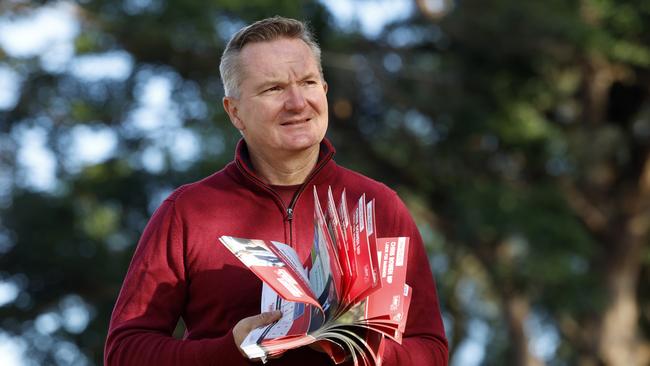The reality is suburbia and the bush love renewables

The term “silent majority” was popularised by Richard Nixon the best part of 60 years ago. But it’s a term that could easily be applied to the 2025 federal election results.
Understandably, there is a lot of debate about Australia’s energy transition. If you read the comments on my Facebook feed, or indeed the opinion page or letters page of this newspaper, you could be forgiven for thinking that Australians aren’t on board for our energy transition or that there is a massive divide of support between the cities and the bush when it comes to climate action.
There has never been much evidence to support this noise. But the federal election result is clear. Peter Dutton described the 2025 election as a referendum on Australia’s energy choices. Fair enough. And the results of that referendum are clear: in uncertain times Australians want an affordable plan, backed by the experts.
Let’s look at some of the details. It was speculated that Labor’s plans for offshore wind could cost us the seats of Paterson and Gilmore, among others. Meryl Swanson, who has constructively advocated for her community, saw her two-party-preferred vote in Paterson increase by 4.25 per cent. Swings in Nelson Bay, the epicentre of the offshore wind debate, were small either way.
In Cunningham, MP Alison Byrnes, a courageous and vocal advocate of offshore wind in her community, increased her vote in both primary and two-party terms.
Two of Labor’s big wins came in seats adjoining the Bass Strait offshore wind zone: Bass and Braddon. And the seat of Forrest, which hosts the Bunbury offshore wind zone, saw the Labor candidate come a lot closer to snatching it than most people predicted.
And then of course there was the nuclear debate. The Liberals argued the most expensive form of energy, nuclear, would somehow be faster and cheaper to deliver than renewables backed by gas and storage. This wasn’t about delivering for Australians, it was about securing internal political peace at any cost to taxpayers.
But the Australian people saw through this. There was a reason the Labor Party and I were very happy to talk about the opposition’s $600bn nuclear policy during the campaign, but the opposition was not. Resolve/Nine polling not long before the election showed that 31 per cent of people cited the Coalition’s nuclear policy as their biggest hesitation in voting LNP. Meanwhile, SEC Newgate research found 72 per cent support for Labor’s policy of cheaper home batteries.
Dutton paid a particularly high price for his support of Ted O’Brien’s nuclear policy: 47 per cent of voters in Dickson said the nuclear policy was their reason for withholding their support in the leader’s constituency.
When it came to overall energy policy, 44 per cent said Labor’s long-term plan was the better option; only 24 per cent believed the Coalition’s plan was superior.
As someone who has spent a lot of time in the regions, and who lives in the western suburbs of Sydney, most of these results are unsurprising. Residents of suburban and regional Australia have a lot more nuanced and supportive approach to renewable energy than conservative commentators – who don’t actually spend much time in regional and suburban heartlands – give them credit for.
One of the great myths of the climate change debate in Australia is that inner-city dwellers support strong climate action and the rest of us are lukewarm or hostile. In fact, people in the suburbs and regions are living the transition and benefiting from it. The top three suburbs in NSW benefiting from our electric vehicle discount aren’t in the inner city or North Shore. They are Baulkham Hills, Marsden Park and Kellyville, deep in northwest Sydney. You’re more likely to see an EV in Werribee than Toorak.
The Liberals’ own costings included plans to pocket more from the fuel excise because they’d scrap the means to bring cheaper-to-run cars into the country. More proof they’d rather win a political argument even if it meant families in the suburbs pay more.
When it comes to solar panels, there are 10 times more solar arrays in Blacktown (in my electorate) than in Bondi (in the seat of Wentworth). This is why Labor’s Cheaper Home Batteries Policy was so popular in suburban electorates; Australians knew the savings they were making with solar panels could be supercharged with a battery, and our government would help them do it.
I am a realist: conservative commentators who don’t support our renewables transition are not about to accept the electoral reality and the lessons from the 2025 election. But next time you read someone waxing lyrical about how unpopular renewable energy is, at least now there is real-world data to remind us how wrong they are.
So let me be clear on the facts driving the government’s commitment to deliver the affordable, reliable energy grid Australians deserve. Our ageing coal-fired power stations are nearing retirement, and they aren’t getting any cheaper or more reliable with age.
We need to replace them, and Australia has the best wind and sun to power our future. We’ve got investment flowing, and the states and territories are on board to work together and deliver a better system. This is work we began in the midst of the worst global energy crisis since the 1970s – and we know there is more to do.
We’ve made sure in the immediate term there is energy bill relief, while we deliver lasting structural reform. Australians understand this is more than a three-year fix, and we’ll keep working to deliver the modern grid Australians deserve.
Chris Bowen is the Labor Minister for Climate Change and Energy.





